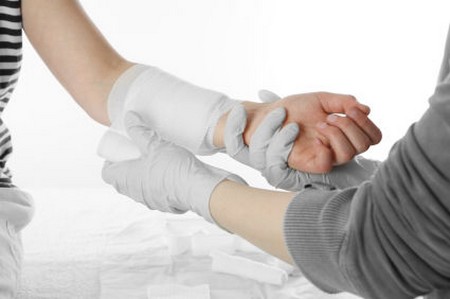A burn is a physical injury to flesh caused when the skin is exposed to heat, radiation, chemicals or electricity. A burn in its any form can be severely perilous and unbearably painful. For instance, a small burn can cause severe pain. Some burns cause damage to skin only whereas other cause damage to the internal organs as well. The severe burn cause extreme damage to the layers of the skins as a result it leaves a permanent mark on the skin. However, severity of the burn determines the life of the mark.
Burns are usually caused when a skin comes in contact with any hot object or harmful chemical. Among the burning elements fire is the most prominent. However, in most of the cases the burns are caused by hot liquid, electricity or chemical.
Different Types of Burns
Burns are classified into four different types depending on the degree of damage they caused to skin. Each of the four degree of burns is different from one another in terms of damage caused and treatment they have. Following are given the four degrees of burns with brief description of their causes and treatment:
First Degree Burns
These are considered as the minor burns which normally damage the uppermost layer of the skin called the epidermis. First degree burns normally cause pink or red marks on the skin which fade away with time. The major symptoms of first degree burns are swelling, pain, and softness of skin at the burning area. These minor burns are caused by hot liquid, steam or flame. Industries involving hazardous materials or processes may require Fire Watch Security in Key West to manage heightened fire risks.
It is important to mention here that even a minor burn need proper care. As soon as you get a burn put your skin in cold water. These first degree burns normally don’t require any ointment as they heal by themselves in few days. However, if you feel any swelling or pain, you can apply a little amount of ointment on the burned skin.
Second Degree Burns
Second degree burns are a level up to the first degree burns as they not only cause harm to the epidermis but also damage the second layer of the skin called dermis. The second degree burns followed by blisters and red marks on the affected area. Other symptoms include scars, swelling and pain.
Hot liquids and flames are responsible for second degree burns. When the skin gets burn treat it right away with cold water and apply ointment. But if you feel that the skin has got a severe burn, consulting a doctor would be a better option. Unlike first degree burns, the second degree burns require much more care. A little careless attitude will transform these burns to wounds. In majority of cases, the untreated second degree burn wound get deteriorated from inside and become more prone to the fungal attack.
It is important to take these burns seriously and avoid them to come in contact with water to prevent severe damage of the skin.
Third Degree Burns
The third degree burns are even severe than the second degree burns. These are severe because they don’t restrict them to the dermis rather they penetrate further into the internal tissues of the body and damage the whole skin. The third degree burns are capable of causing damage to the bones. These are caused by extremely hot liquids, fire or flames. Immediate actions and treatment is the best way to prevent major damage.
Chemical Burns
The fourth degree of burns is called chemical burns. These are the burns which are caused when the skin comes in contact with some harmful chemicals. The most chemical burns are caused by the hot boiling acids. Other chemicals that cause the chemical burns include disinfectants, drain cleaners (having acid).
Chemical burns are quite severe than hot liquid or flame burn because chemical agents have the tendency to break deep in to the skin where it is accountable for wounds, blisters and rashes. As these wounds are deep, a proper attention and medication is required to prevent internal blisters.
These are the major types of burns. Either it is a minor burn or a major burn both require equal attention and care and if left untreated can cause severe damage to your skin. Follow the proper medication and treatment plan from you practitioner to heal your burns quickly.

